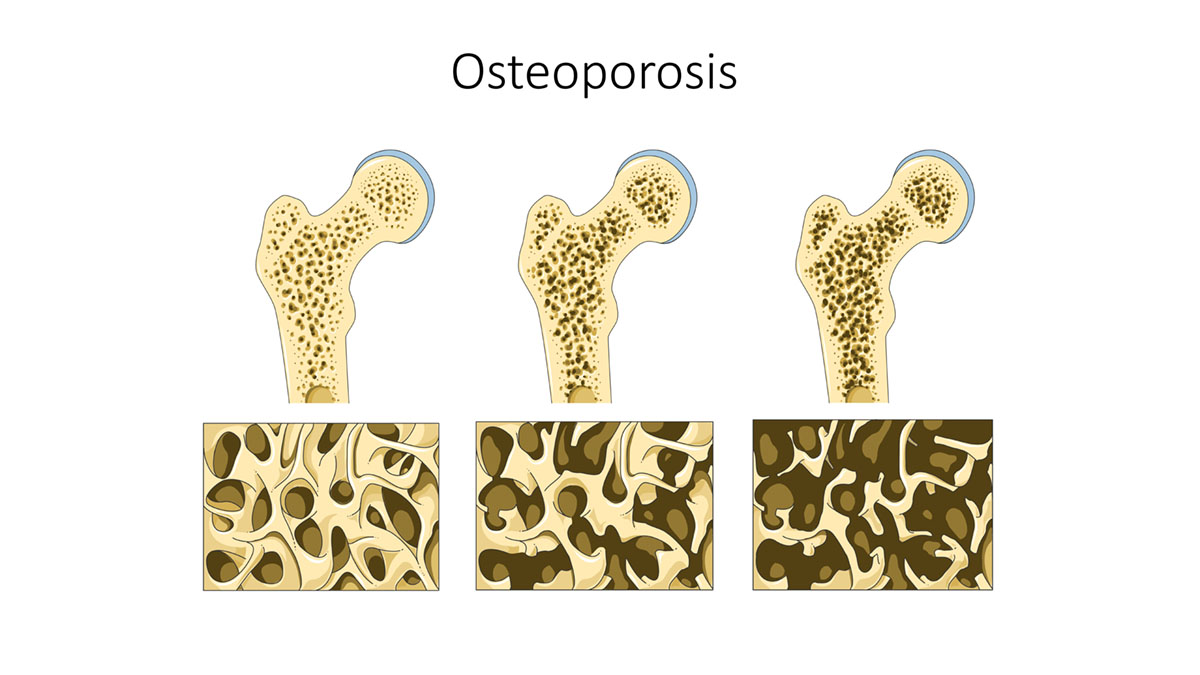Over 200 million people across the globe suffer from osteoporosis, a condition that causes brittle bones and results in more than nine million bone fractures annually. More than 70 percent of people over 80 will develop osteoporosis.
Your risk of osteoporosis increases as you get older, but younger people can be affected, too.

Osteoporosis is a fairly common disease that weakens your bones — making them break easily. Simple daily activities like walking may fracture your bones easily if you have osteoporosis. Osteoporosis affects the spine, hips, and wrists the most.
Though osteoporosis can develop in anyone of any age, this hidden condition is much more common in older people. Women have a much higher risk of developing osteoporosis than men, though this doesn't mean men can't get it. In fact, around four percent of men in the US over 50 have osteoporosis. In comparison, 18 percent of women over 50 will suffer from osteoporosis.
So, what is osteoporosis, and how is it diagnosed and treated?
What Exactly Is Osteoporosis?
Osteoporosis, a systemic skeletal disorder, causes low bone mineral density. To understand how osteoporosis weakens your bones, you'll need to know that bones are a living tissue that your body automatically replaces.
Your body usually breaks down old bone tissues to replace them with new and healthier ones. However, as you grow older, the process becomes imbalanced, and your body breaks down more bones without replacing them.
The inside of your bones is often described as having a "honeycomb" pattern. Strong and healthy bones will have honeycombs with small holes. However, osteoporosis patients have much larger holes and thinner bones. More delicate bones are more prone to fractures.
Who Is Most at Risk for Osteoporosis?
Anyone of any age, sex, and race can develop osteoporosis, though some people have a higher risk. The groups with the highest risk of getting osteoporosis are older Asian and white women. You may have a higher risk of developing osteoporosis if:
- You are physically unfit.
- You frequently smoke or consume alcohol.
- You have already fractured your bone before.
- You have a low body mass index (BMI).
- You have lousy nutrition — a lack of calcium and vitamin D.
- You have a family history of osteoporosis.
- You've gone through the menopause.
Senile osteoporosis is caused by aging and usually occurs in people over 70. Older people are the most susceptible to osteoporosis because your bones start breaking down faster and regenerating more slowly once you reach age 30.
Osteoporosis: The Diagnostic Process
Diagnosing osteoporosis may take a couple of steps. First, your doctor will evaluate your risk of osteoporosis and bone fractures.
Typically, you'll be asked for your medical history before your doctor performs any tests. Your doctor may want to look at your family history, diet, physical activity, smoking habits, and more to evaluate your risk of developing osteoporosis.
After this, your doctor may perform a physical exam to check your height compared to your previous height because osteoporosis can include height loss. Your doctor might ask you to try and get up from a sitting position without using your arms and if it is painful.
Osteoporosis might not cause bone loss, so you may also do a blood and urine test to determine what other medical conditions you may have.
Bone density tests — also called dual-energy X-ray absorptiometry (DEXA) — are carried out to check if patients have osteoporosis. You may go through one if your doctor believes you have osteoporosis or are at risk of getting it. Bone density tests will x-ray your bones to check their density, as those with osteoporosis have a lower bone density.
Osteoporosis Treatment and Prevention
Osteoporosis sounds pretty scary, and it can significantly impact your life. Unfortunately, osteoporosis has no cure. Don't lose hope, though, as some medications can strengthen your bones and reduce fractures.
If you are diagnosed with osteoporosis, your doctor might prescribe you bisphosphonates — a type of medication that helps stop bone mass loss. Some bisphosphonates may include ibandronate, alendronate, and risedronate.
Men with osteoporosis may go through testosterone therapy to boost their bone density. On the other hand, women with osteoporosis might go through estrogen therapy. However, it also has its fair share of side effects.
Exercise is also vital for osteoporosis treatment. Weight-bearing exercises help most with osteoporosis, which are exercises where your arms or feet stay on a surface. Weight-bearing activities could range from something as simple as climbing stairs or a more complex workout with dumbbells.
Your doctor may also ask you to tweak your diet, as getting certain nutrients is essential to the treatment of osteoporosis — most notably calcium and vitamin D. Calcium is well known to promote bone health, but did you know that your body also needs vitamin D to absorb calcium?


Your thoughts on this